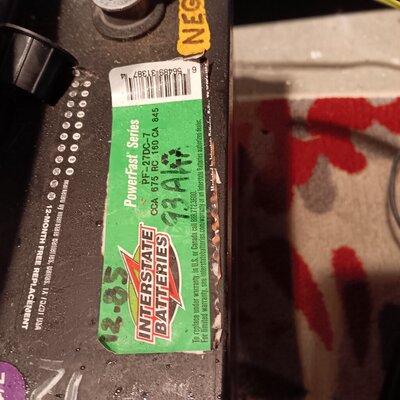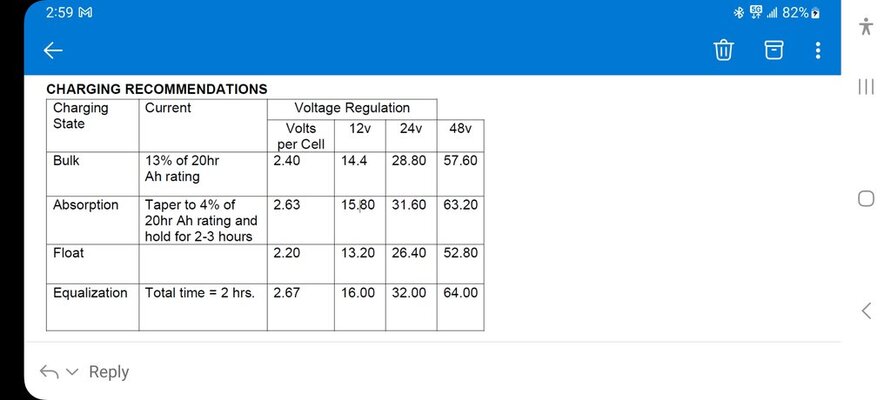Google told me: CCA÷7.25=Ah
CCA is a merit of instantaneous current delivery, not energy storage. It's just an approximation.
I will research how to use RC to determine Ah.
RC/60*25. Now, to split hairs, this is the Ah at 25A draw which is a nominal 7x of what the approximate C/20 rate is for this battery. You only have one discharge rate now (~5A) so can't calculate peukert but a WAG to your C/20 Ah rating is probably closer to 75Ah than 67. But, the fact you got almost all of that strongly implies a healthy battery.
they didn't answer when asked the battery Ah info if memory serves.
I've gotten product info from interstate using their web contact page. The one I have handy is for a group 24 marine and it shows 64Ah for RC140, so the numbers we're seeing for your group 27 seem to line up. For the group 24 the RC Ah is 58, C/20 rate is 64, 10% difference. On yours the RC Ah is 67, +10% for C/20 would be 74 Ah. Again, none of this is precision and I would consider any result >80% to be "pass". For extra credit you can monitor cell temperature and apply a correction factor for that but for this kind of testing precision isn't usually necessary.
I am recharging now and will for sure run another equalize. Can this be done back to back to verify maximum battery voltage has been reached?
A complete charge cycle will finish the bulk phase and run the entire absorb phase time (4 hours typical) before it would switch to float/complete. Then you can run an equalize charge.
With a couple of data points now you can track to see how the battery performs at any point in the future. What I do is twice a year, winterize and unwinterize I do a full capacity test and put it in my maintenance log. That way I know what shape the battery is in before I start the camping season, then what trauma I've inflicted during the season when I store it. If you take notes as to specific times and terminal voltages during the course of the test you can do interim abbreviated tests (say down to 12.0V) and see how closely the elapsed time lines up to the last test. Probably overkill for the most part unless you're cycling the hell out of your batteries.
The 2nd capacity test will be dialed down to the recommended draw 13% of Ah) = 8-9A.
You lost me on this one.
Mark B.
Albuquerque, NM



